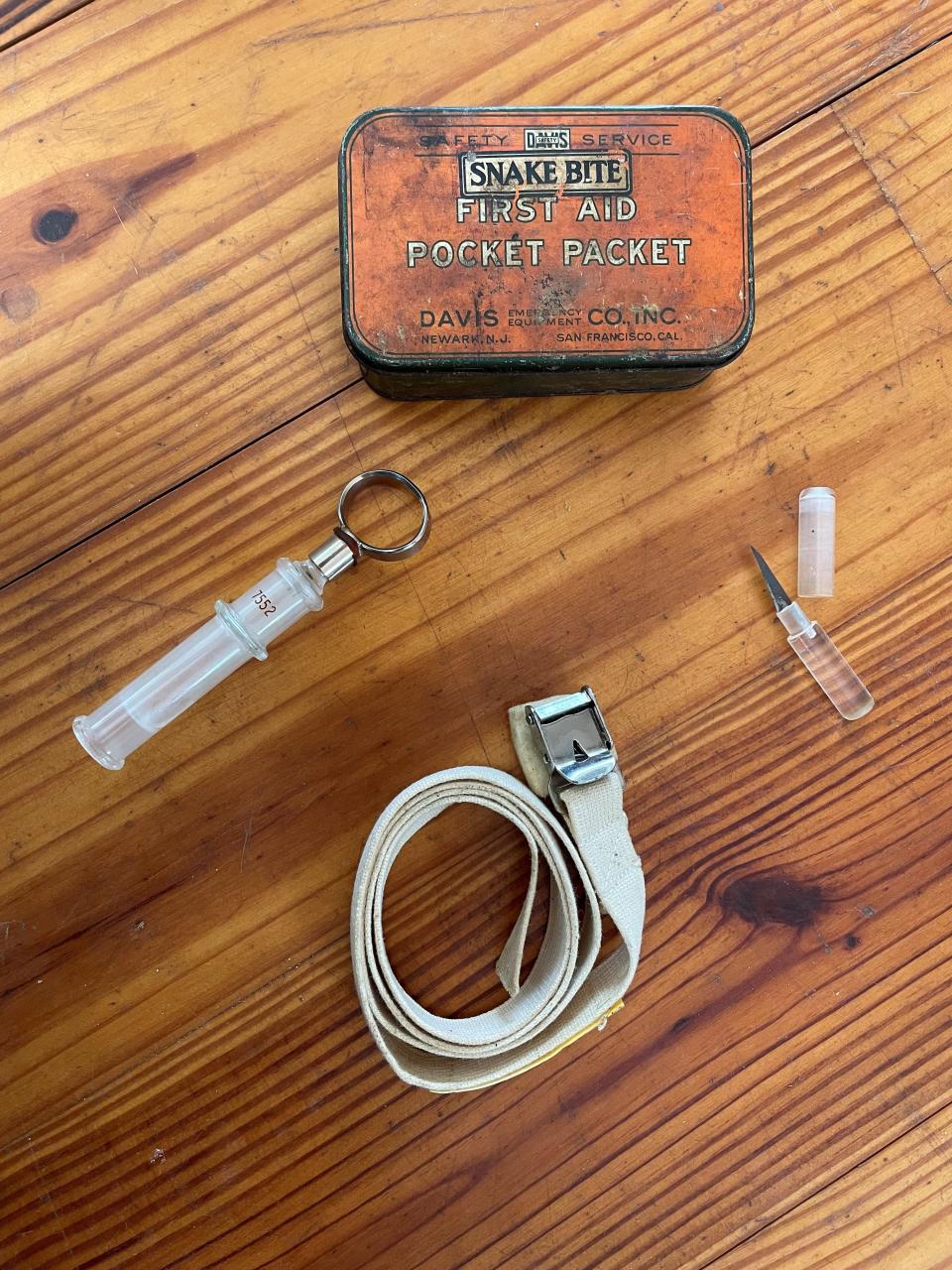How to avoid snake bites and what to do if you don't | ECOVIEWS
Spring has arrived and Mother Nature’s creatures are astir, including the snakes. The good news is that when you are outside where snakes are close at hand, the odds of a happy ending are definitely in your favor.
Despite the mystique surrounding snakes, an encounter that ends badly can usually be avoided with a few common-sense precautions and some basic knowledge.
More: Why finding a snake is a positive environmental sign | ECOVIEWS
Alleviate your snake anxiety by understanding how unlikely you are to receive a life-threatening snakebite anywhere in the country. Knowing the proper response to a snakebite involves learning not only what you should do but also what you should not do.

1. Probability of encountering a snake: The odds of even seeing a snake are low, not because snakes are not around but because they do not want to be seen by people. When you are on a nature walk, far more snakes will be aware of you than you will ever see.
2. Probability of the snake being venomous: In North America harmless species always outnumber venomous ones. For example, Alabama and Georgia have more than 40 species of snakes each. Only six of them are venomous. If you do encounter a snake, it’s likely to be nonvenomous.
3. Probability of being bitten by a venomous snake: Like most other wildlife, snakes want nothing to do with humans and will quickly retreat if allowed to do so. Many, if not most, venomous snakebites in America occur because the victim saw the snake, then tried to kill it or pick it up. Shouldn’t blame the snake for that.
4. Probability of a serious bite: In the unlikely event you get bitten by a venomous snake, with proper safety precautions your odds of a fatal snakebite are astonishingly low. In more than half the instances of U.S. snakebites, the snake injects little or no venom. Known as a dry bite, it is usually not serious and the victim suffers only temporary discomfort.
5. Probability of receiving improper treatment: Recommending proper treatment for venomous snakebites in advance is like suggesting what the best treatment should be for a yet-to-occur automobile accident. Proper treatment will depend on the circumstances. Most victims will suffer only minor problems and not need medical care. People seemingly uninjured in a car wreck are often taken to a hospital as a precaution. Likewise, venomous snakebite victims, even those initially exhibiting no pain or discomfort, should receive medical evaluation.
6. What to do: Most first-response actions following a snakebite are second nature. Get everyone away from the snake. It is not necessary to collect the snake before medical treatment, so do not risk another bite by trying to kill the snake or pick it up. Remove the patient’s rings, watches and footwear immediately, before swelling occurs. Keep the victim calm and treat them for shock if necessary.

The prevailing wisdom is to get emergency treatment as quickly and safely as possible if obvious swelling is apparent and the victim is in intense pain. Having a cellphone and a set of car keys can be critical. Fortunately, medical understanding of snakebites and how to treat them has improved considerably since I was young. The odds of medical complications have decreased significantly.
7. What not to do: Last century’s classic first-aid procedures of cutting at the site of the wound and using a tourniquet are no longer recommended by most medical authorities. Extensive suction after the first few moments is also not helpful. Treating a friend’s snakebite with a stun gun, a once-recommended abomination, will not cure anything — and will probably end that friendship.
In the face of technology and its myriad distractions, coaxing people outside to appreciate Mother Nature gets harder every year. Let’s not add an unnecessary psychological barrier by making people afraid of a fascinating part of the natural world. Educate yourself and others about snakes. Then get outside and enjoy the wonders around you.
Whit Gibbons is professor of zoology and senior biologist at the University of Georgia’s Savannah River Ecology Laboratory. If you have an environmental question or comment, email ecoviews@gmail.com.
This article originally appeared on The Tuscaloosa News: How to avoid snake bites and what to do if you don't | ECOVIEWS

